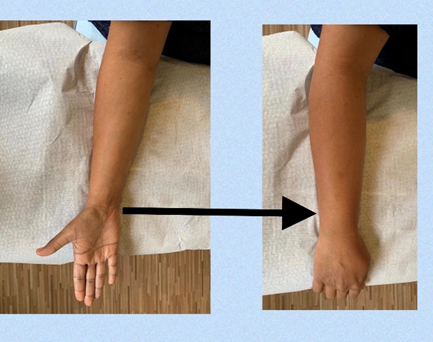
A heel spur is a bony growth that forms under the heel bone, and it can cause sharp or nagging pain and inflammation in the heel and its surrounding areas. Heel spurs are often caused by overuse, wrong shoes, improper foot mechanics, and certain medical conditions such as plantar fasciitis.
Heel pain from a heel spur is typically felt in the bottom of the heel and can be accompanied by:
- Sharp pain when standing or walking
- Pain that is worse in the morning or after prolonged sitting
- swelling or redness in the heel
- bony protrusion that can be felt or seen on the heel
Treatment for heel pain from a heel spur may include:
- Rest and ice: Applying ice to the affected area can help reduce pain and inflammation.
- Stretching and exercises: Stretching the calf muscles and Achilles tendon and doing exercises to strengthen the muscles in the foot and leg can help improve flexibility and reduce stress on the heel.
- Orthotics: Customised shoe insoles can help correct any improper foot mechanics that may be contributing to the heel spur.
- Medications: Non-steroidal anti-inflammatory drugs (NSAIDs) can help to reduce pain and inflammation.
- Physiotherapy: A physiotherapist can treat this using Laser, Ultrasound and Radial Shockwave therapy and exercises to improve strength, flexibility, and range of motion.
- Surgery: In some cases, surgery may be recommended to remove the spur, but it is usually considered as a last resort.
It is important to consult with a healthcare professional to determine the underlying cause of heel pain and the appropriate course of treatment. Additionally, some lifestyle modifications such as switching to shoes with a cushioned heel, avoiding high-impact activities, and incorporating low-impact exercises like swimming, cycling or yoga can also be beneficial in managing heel pain from heel spur.
You may contact us if you need help with your heel pain.
Foot and Heel
Plantar fasciitis is felt as a pain around the heel and arch of the foot. It can be felt as a discomfort or sharp pain in the heel on weight bearing especially after a rest period. As a person gets older, the fascia becomes less elastic. The heel pad becomes thinner and loses the capacity to absorb as much shock. There may be some swelling, small tears or bruises in the plantar fascia with the pounding force on the heel. Plantar fasciitis can also be a result of overuse in activities such as long-distance running, basketball, ballet dancing or dance aerobics. It settles down quickly if treated early and given enough rest, but may become worse and chronic if initial symptoms are ignored.
To reduce the pain of plantar fasciitis, try these self-care tips:
- Give adequate rest to your feet. Avoid prolonged standing or high impact activities like running that cause repeated loading on the foot. If you need to stand for long time, then shift your weight from one foot to the other or use a footrest under the affected foot to offload it for a while.
- Don’t walk barefoot,especially on hard surfaces, as this puts extra stress on the plantar fascia. It is advisable to wear soft heeled footwear or footwear with scooped out heels to avoid pressure on the heel.
- Wear supportive shoes.Choose shoes with a low to moderate heel, supportive arches and good shock absorbency.
- Avoid high heels especially when you need to walk long distances or stand for long periods of time. High heel shoes exert additional pressure on the inflamed fascia and lead to more heel pain.
- Do not wear worn-out shoes.Replace old, tattered, non-supportive shoes. This is very important if you walk or run in these shoes. A good way to tell that your shoes need replacing is to look for thinned (worn) out areas on the sole of the shoe.
- Apply ice: This can be done on the painful area three or four times a day, especially at the end of the day. Icing helps to reduce pain and inflammation. Icing can also be done with a frozen bottle of water rolled under the foot while sitting.
- Massage: Self massage can be done by rolling a tennis ball under your foot while sitting. As mentioned above, a frozen water bottle can also be used.
- Change your sport.Try a low-impact sport such as swimming or bicycling instead of walking or jogging while the plantar fascia is inflamed/painful.
- Maintain a healthy weight. If you are overweight, then try to lose some weight. Extra weight can put extra stress on your plantar fascia.
- Exercise before getting out of bed in the morning or after prolonged sitting(sit to stand): Plantar fasciitis pain is usually at its worst in these two situations. A good way to combat this is to perform circular movements at the ankle (clockwise and anticlockwise) and a few seated calf stretches before weight bearing on the feet.
- Do your stretches.Simple home exercises can be done for plantar fasciitis. Perform this stretch when waking up, mid-day, and before bed. It is also very important to perform these stretches in the warm up and cool down phase of your exercise routine, even after you recover from plantar fasciitis pain. This will help to prevent any recurrences.











































